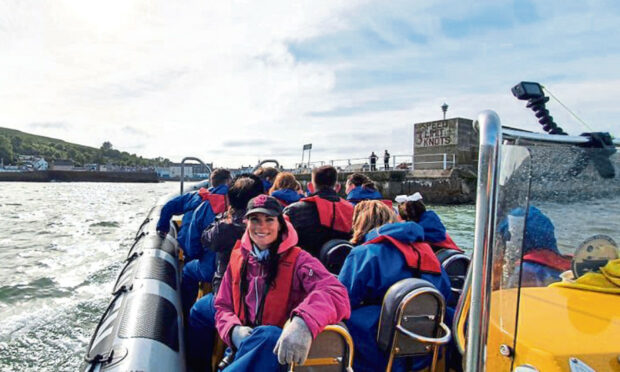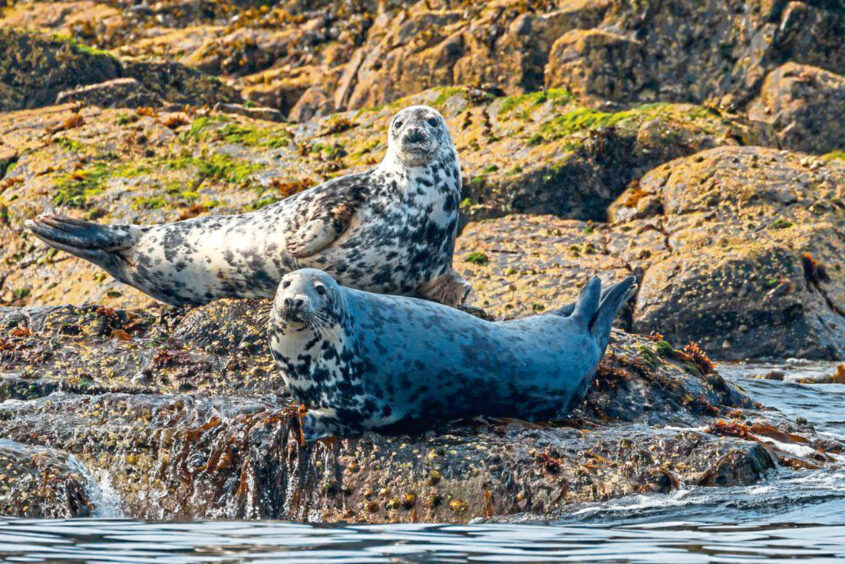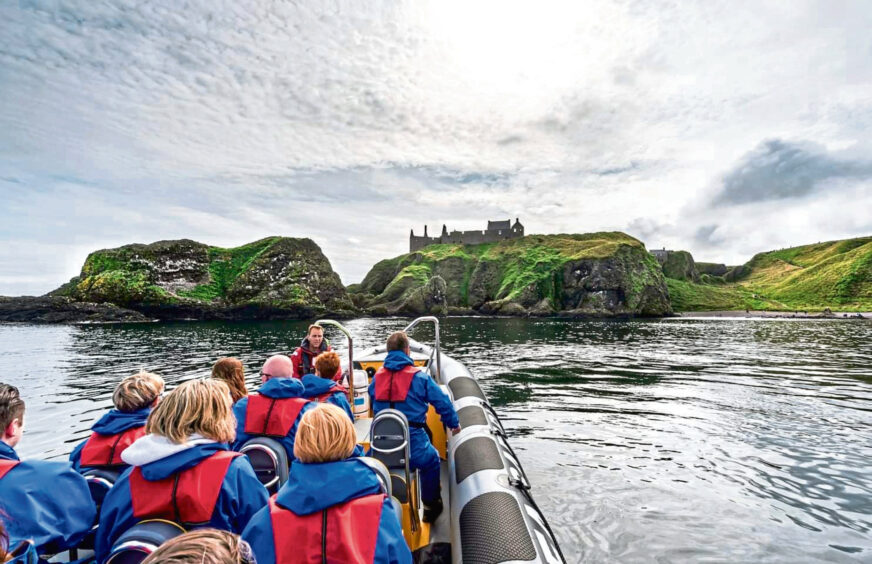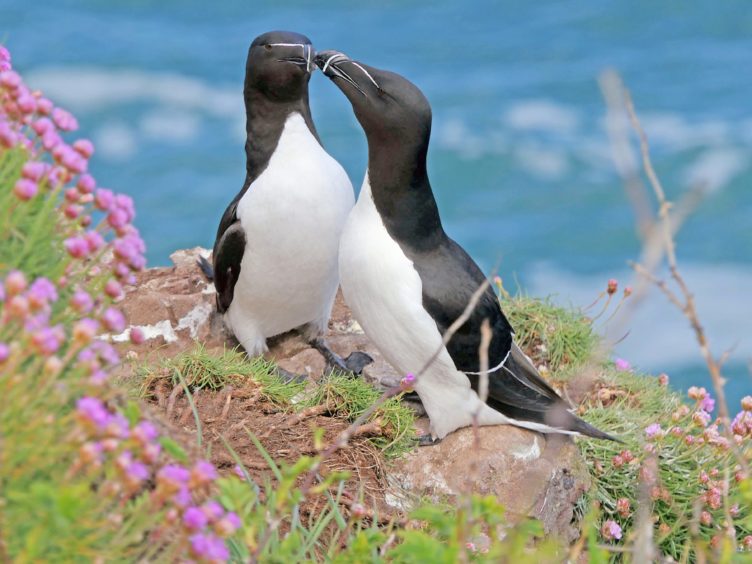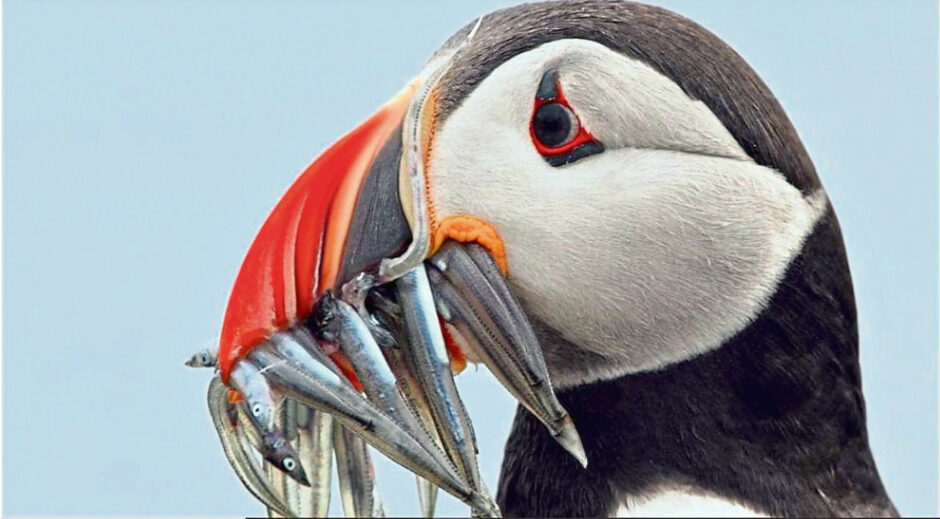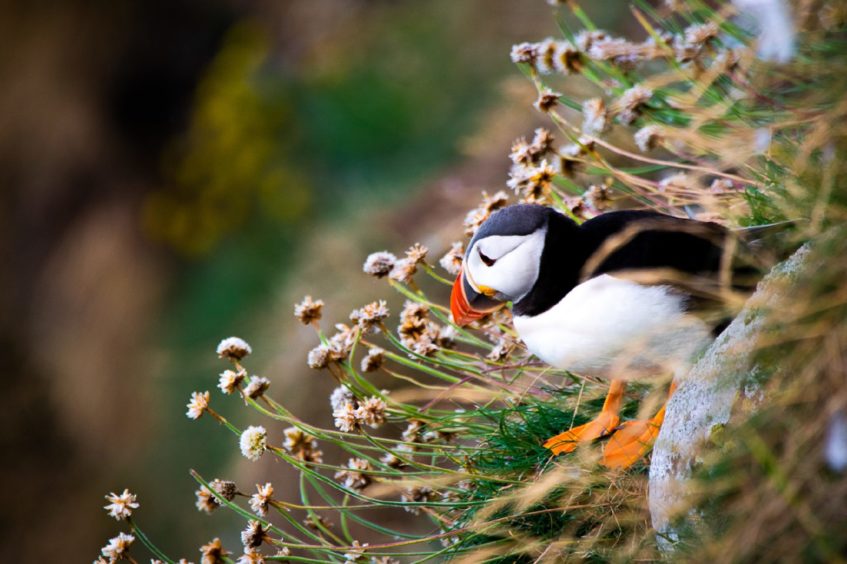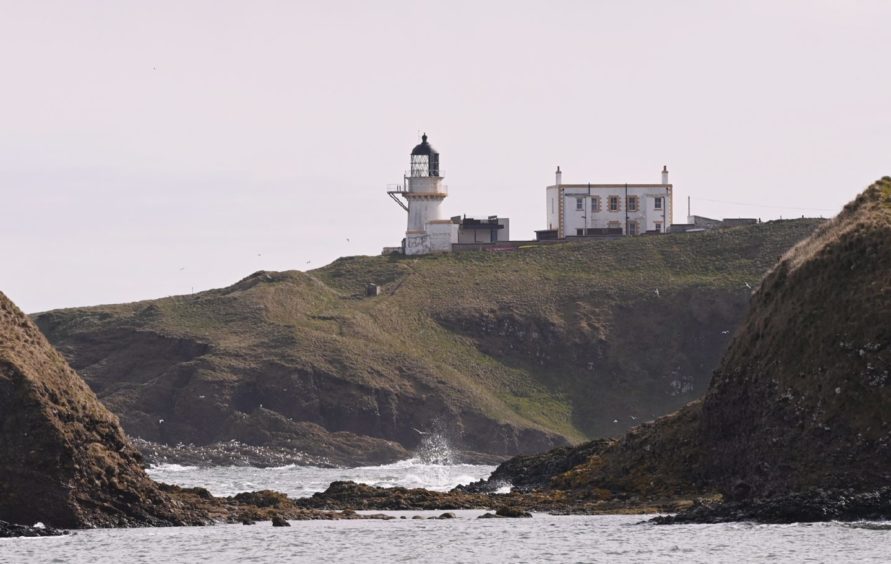Gayle checks out the dramatic north-east coastline on an adrenalin-fuelled trip with Stonehaven Sea Safari.
It’s a blustery Saturday afternoon when I turn up for my boat trip with Stonehaven Sea Safari.
A girl standing on the pier is already looking somewhat green about the gills.
“I’ve just taken a seasickness tablet,” she tells me. “It looks a wee bit choppy.”
When I left the house, the phrase “motion sickness” hadn’t crossed my mind. But now, as I gaze out at the angry North Sea crashing against the harbour walls, I wish it had.
Everyone on the trip is kitted out with life vests, waterproof trousers (they’re so big on me that I resemble rapper MC Hammer) and those without jackets can borrow one.
Our boat for the two-hour adventure is a custom-built 12-seater RIB, named 4 Brothers after owner Andrew Buchanan’s four sons.
Leaving the harbour, skipper Andy Martin gives us a cheeky grin before putting the metaphorical foot down and powering through the waves at full tilt.
It’s so much fun, and many of us shriek and squeal like kids enjoying their first day at the funfair, especially when we get splashed by salty sea spray.
Tour guide Tom Connon explains there’s a chance seals might be hanging out at Garron Point, so we head there first, passing a gorgeous sandy beach at Skatie Shore.
Alas, the seals are nowhere to be seen, so we about turn and head south.
Tom points out “Lion Rock” in Strathlethan Bay, which, as you might’ve guessed, is a sea stack shaped a wee bit like a recumbent lion, and there’s also the famous “pudding stone” rock.
On less squally trips, the boat heads into a “sloch”, a local name for an inlet.
Despite not venturing in, we get a cracking view of seabirds galore including guillemots, razorbills, kittiwakes, cormorants and shags.
As we power round the corner, the spectacular silhouette of Dunnottar Castle hoves into view.
To view it from this perspective, perched on jagged cliffs, is completely breathtaking – entirely different from seeing it on terra firma.
“It’s always best seen from the sea,” agrees Tom, who then treats us to some cracking stories of war, tragedy and escape from the ruined fortress.
Other fascinating sights – and there are many – include a rock formation nicknamed the Devil’s Footsteps because you can see steps supposedly made by the devil carved into a cliff face, and Pulpit Rock, a dramatic sea cave packed with thousands of seabirds.
The smell of guano is overpowering, the risk of being pooped on high, but it’s worth it for the experience.
Sprinting past Craiglethan Island, we pass a sea stack teeming with birds and spot grey and common seals basking on rocks below. A couple of shiny black heads pop up near the boat and we reach for our cameras.
“The steep-sided inlet is home to one of the biggest colonies of seals on the east coast,” says Tom.
“In early spring, the pebble beach is full of pups.”
As the boat slows towards what Tom refers to as “wine cove”, he regales us with evocative tales of pirates and smuggling.
It suddenly dawns on me that we’re well through the trip and I haven’t felt seasick – and nobody has been sick.
The only vaguely ropey sensation is when the boat stops to allow us to gaze up at cliff faces.
The rocking motion is ever-so-slightly nausea-inducing, but as soon as we get moving, the sensation eases.
I must reiterate that it’s not usually quite so choppy so don’t be put off!
Cruising along at 25 knots, we soon reach the RSPB reserve at Fowlsheugh, which Tom describes as a “spectacular seabird city” with 130,000 birds nesting on cliffs, including kittiwakes, guillemots, razorbills, fulmars, herring gulls, shags and, joy of joys, puffins!
Regular readers of this column may recall that I spent hours praying I’d spot a puffin or two at the Bullers of Buchan and Fowlsheugh in late July last year.
The birds, known as “clowns of the sea”, are notoriously elusive and I failed to see any of them.
Today there are dozens of them – popping out of burrows, waddling around on the cliffs, swimming in the sea and running clumsily along the surface of the water before they take off.
Tom tells us that while bottlenose and common dolphins are seen regularly, harbour porpoises, white-beaked dolphins and even minke whales occasionally put on a show.
Leaving Fowlsheugh, there are more oohs and aahs as we motor up to a stunning waterfall at Crawton.
We also pass the tiny fishing village of Catterline, made famous in the paintings of artist Joan Eardley.
Had the sea been calmer, we’d have passed through a natural sea arch into a secret bay, inaccessible to most. That’s for another day!
Our trip finishes with a quick blast across Braidon Bay to see Tod Head lighthouse, built by David Stevenson, of the famous Stevenson family of lighthouse engineers, and first lit in 1897.
It was decommissioned in 2006 but it still stands proud on the storm-battered headland.
The run back to Stonehaven is exhilarating, to say the least.
“It might be a wee bit bumpy,” warns Andy, as he opens up the throttle and powers through the swell and breakers.
Back on dry land, I warm up with a steaming cup of coffee and a brownie from a cafe on the pier and reflect on what’s been an amazing experience.
Adventure, adrenalin, sightseeing, history, storytelling and wildlife-watching are rolled into one with Stonehaven Sea Safari and the result is a thrilling, unforgettable trip.
- *Stonehaven Sea Safari is running trips until the end of August. Book soon before they sell out! Trips range from 45 minutes to two hours. stonehavenseasafari.co.uk
